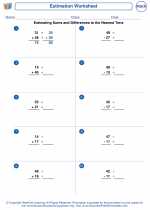Expressions
An expression is a mathematical phrase that can contain numbers, variables, and operations. Expressions are used to represent a value or a set of values. They can be as simple as a single number or variable, or as complex as a combination of multiple terms and operations.
Types of Expressions
- Numeric Expressions: These are expressions that consist of numbers and mathematical operations. For example: 5 + 3, 2 * 7, (4 - 2) / 6.
- Variable Expressions: These are expressions that contain variables, which are symbols that represent unknown or changing values. For example: 3x + 7, 2y - 5, 4a2 - 9b.
- Algebraic Expressions: These are expressions that combine numeric values, variables, and operations. For example: 2x + 3y - 5, 4x2 - 7x + 10.
Parts of an Expression
Expressions can be broken down into the following parts:
- Terms: These are the individual parts of an expression that are separated by addition or subtraction. For example, in the expression 3x + 4y - 2, the terms are 3x, 4y, and -2.
- Coefficients: These are the numerical factors of the variables in the terms. For example, in the term 5x, the coefficient is 5.
- Constants: These are terms that are just numbers, without any variables. For example, in the expression 2x + 3, the constant is 3.
- Variables: These are symbols that represent unknown or changing values. For example, in the expression 4a - 7b, the variables are a and b.
- Operations: These are the mathematical operations such as addition, subtraction, multiplication, and division that are used to combine the terms in an expression.
Evaluating Expressions
To evaluate an expression means to find its value when the variables are replaced with specific numbers. For example, to evaluate the expression 3x + 5 when x = 4, you would substitute 4 for x and then perform the operations to get the value of the expression.
Study Guide
To understand expressions better, it's important to practice identifying the different parts of an expression, combining like terms, and evaluating expressions with specific values for the variables. Here are some key points to focus on:
- Identify the terms, coefficients, constants, and variables in a given expression.
- Combine like terms by performing the operations (addition or subtraction) on the coefficients of the same variables.
- Practice evaluating expressions with different values for the variables to find their numerical values.
- Work on simplifying complex expressions by applying the order of operations (PEMDAS: Parentheses, Exponents, Multiplication and Division from left to right, Addition and Subtraction from left to right).
Understanding expressions is crucial for solving equations, simplifying algebraic problems, and working with mathematical models in various real-world scenarios. With practice and a clear understanding of the different components of expressions, you'll be able to tackle more advanced mathematical problems with confidence.
.◂Math Worksheets and Study Guides Sixth Grade. Estimation

 Worksheet/Answer key
Worksheet/Answer key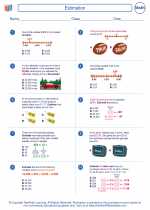
 Worksheet/Answer key
Worksheet/Answer key
 Worksheet/Answer key
Worksheet/Answer key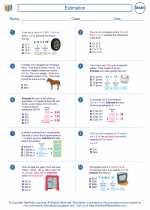
 Worksheet/Answer key
Worksheet/Answer key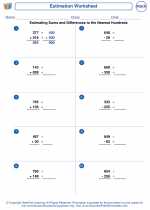
 Worksheet/Answer key
Worksheet/Answer key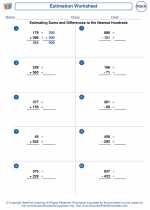
 Worksheet/Answer key
Worksheet/Answer key